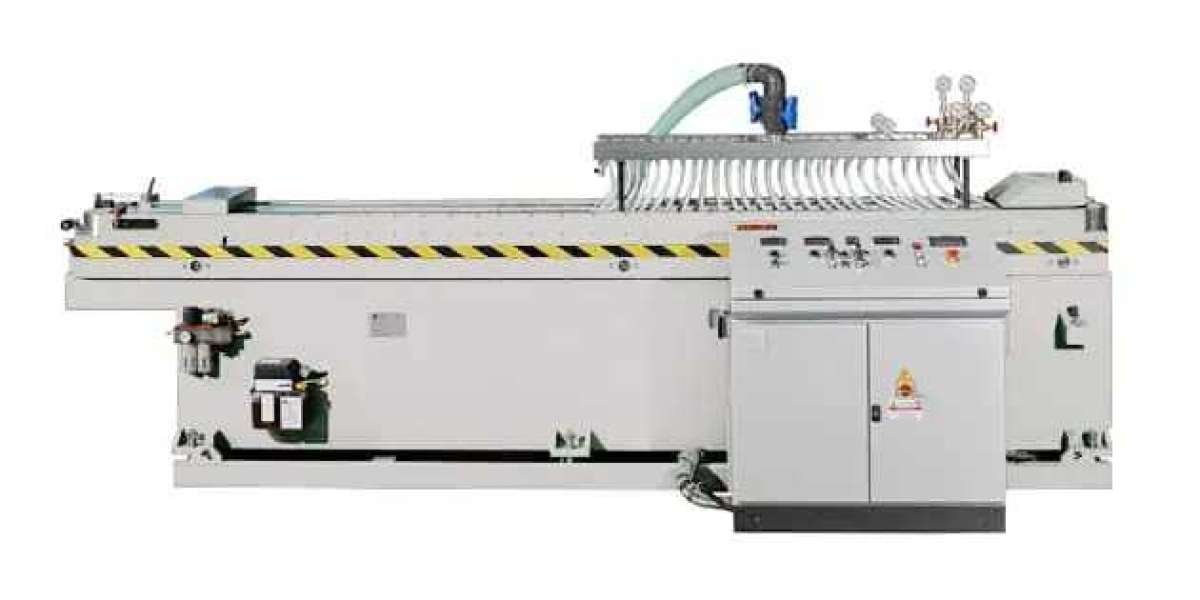Among these, corrugators machine stand out as the unsung heroes, transforming raw materials into essential components that support various applications, from drainage systems to telecommunications. This article explores the pivotal role of corrugators, their technological advancements, and their impact on the construction industry.
Understanding the Role of Corrugators
Corrugators are specialized machines designed to produce corrugated pipes and sheets by shaping and forming materials such as high-density polyethylene (HDPE) or polyvinyl chloride (PVC). The unique design of corrugated products—characterized by their alternating ridges and grooves—enhances their strength and flexibility, making them ideal for a wide range of applications.
Key Applications of Corrugated Products
Drainage Systems: Corrugated pipes effectively channel water, preventing flooding and soil erosion.
Sewer and Wastewater Management: Their durability ensures reliable performance in demanding environments.
Telecommunications: Used as conduits for cables, they protect sensitive wiring from environmental factors.
The Corrugation Process: A Closer Look
The corrugation process involves several steps, each contributing to the final product's quality and resilience.
Material Preparation
The journey begins with selecting high-quality raw materials. The most common materials used in corrugated pipe production include HDPE and PVC. These materials are chosen for their durability, chemical resistance, and flexibility.
Extrusion
In the extrusion phase, the raw material is heated and melted before being forced through a die to create a continuous pipe. This step is crucial, as it lays the foundation for the product’s shape and consistency.
Corrugation
The extruded pipe then passes through a corrugator, where it undergoes the corrugation process. This involves:
Molding: The pipe is shaped into its corrugated form through high-pressure molding.
Cooling: The newly formed pipe is cooled to set its shape and maintain structural integrity.
Cutting and Finishing
After corrugation, the pipe is cut to specified lengths and may undergo additional finishing processes, including surface treatment and quality inspections.
Technological Innovations in Corrugators
The corrugation industry has embraced technological advancements that enhance efficiency, quality, and sustainability.
Automation
Modern corrugators are equipped with automated systems that streamline production. Automation reduces human error, increases output, and improves product consistency. Real-time monitoring of production metrics allows for immediate adjustments, ensuring quality is maintained throughout the process.
Advanced Materials
Innovations in material science have led to the development of enhanced polymers that offer superior strength, flexibility, and resistance to environmental factors. This evolution allows corrugated pipes to meet the demands of modern construction projects more effectively.
Energy Efficiency
Many manufacturers are adopting energy-efficient practices, such as using advanced machinery that consumes less energy during production. This shift not only lowers operating costs but also aligns with global sustainability goals.
The Impact of Corrugators on Construction
Corrugators play a crucial role in the construction industry, contributing to numerous benefits that enhance infrastructure projects.
Cost-Effectiveness
By producing durable corrugated pipes at lower costs, corrugators help construction companies save money. The efficiency of automated systems reduces labor costs and material waste, resulting in significant overall savings.
Enhanced Durability
The strength and flexibility of corrugated products ensure they can withstand harsh environmental conditions, reducing the risk of failure and the need for frequent replacements. This reliability is particularly important in critical infrastructure projects.
Environmental Sustainability
The production of corrugated pipes often incorporates recycled materials and energy-efficient practices, promoting sustainability in construction. By reducing waste and minimizing energy consumption, corrugators contribute to a greener industry.
Challenges and Opportunities Ahead
While corrugators are pivotal to modern construction, they face certain challenges that could impact their future.
Competition from Alternative Solutions
As construction technologies evolve, alternative piping solutions are being developed. Corrugators must innovate continually to remain competitive and meet the changing needs of the industry.
Regulatory Compliance
Adhering to stringent environmental and safety regulations can pose challenges for manufacturers. Continuous investment in technology and processes is essential to ensure compliance and maintain market relevance.
Global Supply Chain Issues
Like many industries, the corrugators machine sector is affected by global supply chain disruptions. Ensuring a steady supply of raw materials and components is crucial for sustained production.
Follow Us On Social Media Links:-
Follow Us On Facebook:- https://www.facebook.com/itibindia
Follow Us On Linkedin:- https://www.linkedin.com/company/itib-india/
Follow Us On Instagram:- https://www.instagram.com/itibindia/
Add:- B-315/B-316, DamjiShamji Corporate Square, Kanara Business Centre Compound, Laxmi Nagar, Ghatkopar-Andheri Link Road,Ghatkopar (East) MUMBAI – 400 075
Phone: 91-22-62231691
Email: [email protected]







